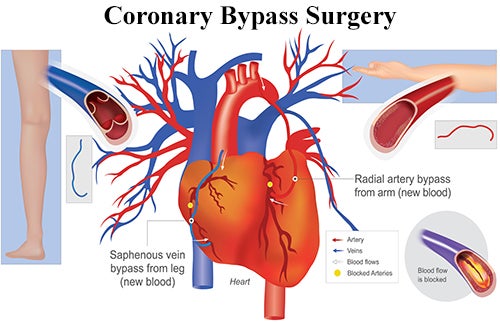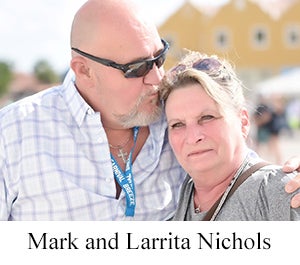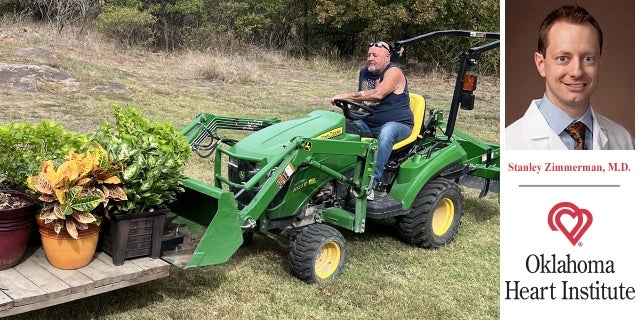It was Mark Nichols’ care and concern for his wife’s health, given her family history of heart attacks, that led him to join her for a cardiac CT angiogram scan at Oklahoma Heart Institute.
“Her brother passed away at age 50 from a sudden heart attack even though he never smoked and was a healthy guy,” said Nichols, a partner in a local construction company. “I told her that if she would take the test, I would sign up and join her, so we decided to do it.”
Afterward, Nichols’ wife Larrita, an employee of Hillcrest Medical Center, received excellent test results. His results, however, caused a great deal of concern when reviewed by cardiologist John S. Tulloch, M.D., ultimately leading to more tests and open heart surgery.
“I was 55 in December 2019 when I had the cardiac scan. When the scan showed high calcium levels throughout my entire arterial system, I was very surprised,” said Nichols. “Looking back, I now think high calcium levels ran in my family. My sister was tested and has high calcium. Even though our mother passed away after a car accident, scans showed that she had calcium spurs on her head and in her brain.”
Open heart surgery
To get more details about the effects of the high calcium levels, Dr. Tulloch ordered a stress test in January 2020. This test involves walking on a treadmill or riding a stationary bike to get one’s heart rate elevated. During the test, Nichols’ heart rhythm, breathing and blood pressure were closely monitored.
The stress test identified problems with blood flowing through Nichols’ heart, so he was referred to Stanley K. Zimmerman, M.D., the medical director of the vascular imaging laboratory at Oklahoma Heart Institute. Dr. Zimmerman ordered a cardiac catheterization in February, a test in which a tube is placed into the artery and then a flexible catheter is advanced into the heart arteries and is injected to check for blockages.
 When they met after the cardiac catheterization, Nichols recalled Dr. Zimmerman saying something like, “I can’t let you leave the hospital without undergoing surgery. Without it, you may not be able to walk back in.”
When they met after the cardiac catheterization, Nichols recalled Dr. Zimmerman saying something like, “I can’t let you leave the hospital without undergoing surgery. Without it, you may not be able to walk back in.”
“The catheterization showed that all of my major coronary arteries were blocked between 90% - 95%,” said Nichols. “I was shocked because I always walk a lot and never feel dizzy. On the day before the cardiac scan, I hung sheetrock with my neighbor and didn’t feel bad afterward.”
Dr. Zimmerman scheduled Nichols for open heart, quadruple bypass surgery the next morning. During surgery the cardiovascular surgery team took a portion of a vein from another part of Nichols’ body and used it to bypass the blocked artery, so blood flowed freely again. The same procedure was then done for the other three blocked arteries.
Nichols also suffered from an arrhythmia, a condition in which faulty electrical signals race through the heart which affects its rhythm. After the bypass procedures were completed, another surgeon performed a procedure that created a maze of scar tissue by applying cold energy to areas of the heart. The maze effectively blocked the faulty electrical signals from sparking a fast heart rhythm.
Looking forward
After spending three days in the cardiac intensive care unit, Nichols stayed an additional 10 days in the hospital before being discharged.

Once home, he and his wife adjusted their diets to minimize his intake of calcium since both have a hereditary heart issue.
“I used to add a lot of salt to my food,” he said, “but I’ve cut back on the salt. We also eat a lot of roasted meats, especially turkey, instead of fried meats. When eating fried foods, we use our new air fryer to reduce fat.”
Nichols doesn’t plan on retiring anytime soon, but he does want to plan more trips with his wife.
“We are talking about some weekend trips to Arkansas with our friends. Larrita and I also like to cruise around the Caribbean, so we hope to plan a cruise soon.”
Nichols is very grateful for the care he received and the future travel opportunities he can look forward to with his wife and friends.
“My doctors at Oklahoma Heart Institute were just fabulous,” said Nichols. “I am just one more example of the many miracles those surgeons perform every day.”
For more information about the cardiac CT angiogram scan at Oklahoma Heart Institute, click here.

